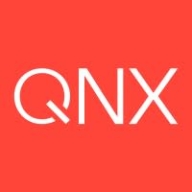

Amazon FreeRTOS and QNX Neutrino are competing products in the embedded systems market. Amazon FreeRTOS has the upper hand for cloud-connected IoT applications due to its integration with AWS, while QNX Neutrino is superior for mission-critical systems with its robustness and reliability.
Features: Amazon FreeRTOS offers seamless cloud integration, a lightweight design, and wide hardware support, appealing to IoT developers. QNX Neutrino features an advanced microkernel architecture, high fault tolerance, and real-time performance, crucial for safety-critical systems.
Ease of Deployment and Customer Service: Amazon FreeRTOS benefits from straightforward deployment with AWS and readily available documentation and community support. QNX Neutrino requires specialized expertise for deployment but provides excellent professional support and services.
Pricing and ROI: Amazon FreeRTOS is cost-effective with low setup costs, attractive due to AWS's free tier and scalable pricing models. QNX Neutrino requires a higher initial investment justified by its return in safety-critical environments where reliability translates to ROI.
Amazon FreeRTOS (a:FreeRTOS) is an open source operating system for microcontrollers that makes small, low-power edge devices easy to program, deploy, secure, connect, and manage. Amazon FreeRTOS extends the FreeRTOS kernel, a popular open source operating system for microcontrollers, with software libraries that make it easy to securely connect your small, low-power devices to AWS cloud services like AWS IoT Core or to more powerful edge devices running AWS IoT Greengrass.
A microcontroller (MCU) is a single chip containing a simple processor that can be found in many devices, including appliances, sensors, fitness trackers, industrial automation, and automobiles. Many of these small devices could benefit from connecting to the cloud or locally to other devices. For example, smart electricity meters need to connect to the cloud to report on usage, and building security systems need to communicate locally so that a door will unlock when you badge in. Microcontrollers have limited compute power and memory capacity and typically perform simple, functional tasks. Microcontrollers frequently run operating systems that do not have built-in functionality to connect to local networks or the cloud, making IoT applications a challenge. Amazon FreeRTOS helps solve this problem by providing both the core operating system (to run the edge device) as well as software libraries that make it easy to securely connect to the cloud (or other edge devices) so you can collect data from them for IoT applications and take action.
QNX Neutrino, a real-time operating system from BlackBerry, delivers robust performance for embedded systems across industries like automotive, aerospace, and telecommunications.
QNX Neutrino is designed for high-performance embedded applications, providing deterministic responses that are essential in systems where timing is critical. Its microkernel architecture ensures maximum security and reliability, making it a trusted choice for developing safety-critical applications. QNX Neutrino's ability to support multitasking and asymmetrical processing adds flexibility, supporting resource utilization across different hardware environments.
What are the key features of QNX Neutrino?
What benefits should users look for in reviews?
In industries like automotive, QNX Neutrino powers complex systems such as Advanced Driver Assistance Systems, ensuring real-time data processing for enhanced safety. In aerospace, it supports flight control systems where reliability and timing precision are crucial. Telecommunications benefit from its scalability and fault resilience, enabling robust network infrastructure.
We monitor all IoT Operating Systems (OS) reviews to prevent fraudulent reviews and keep review quality high. We do not post reviews by company employees or direct competitors. We validate each review for authenticity via cross-reference with LinkedIn, and personal follow-up with the reviewer when necessary.